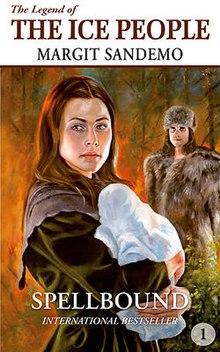
Cain is a biblical figure in the Book of Genesis within Abrahamic religions. He is the elder brother of Abel, and the firstborn son of Adam and Eve, the first couple within the Bible. He was a farmer who gave an offering of his crops to God. However, God was not pleased and favored Abel's offering over Cain's. Out of jealousy, Cain killed his brother, for which he was punished by God with the curse and mark of Cain. He had several children, starting with Enoch and including Lamech.
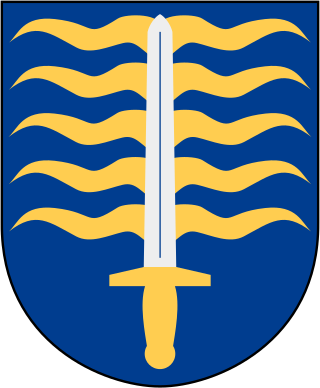
Tyrfing, also rendered as Tirfing or Tyrving, was a magic sword in Norse mythology, which features in the Tyrfing Cycle, which includes a poem from the Poetic Edda called Hervararkviða, and the Hervarar saga. The name is also used in the saga to denote the Goths.

A curse is any expressed wish that some form of adversity or misfortune will befall or attach to one or more persons, a place, or an object. In particular, "curse" may refer to such a wish or pronouncement made effective by a supernatural or spiritual power, such as a god or gods, a spirit, or a natural force, or else as a kind of spell by magic or witchcraft; in the latter sense, a curse can also be called a hex or a jinx. In many belief systems, the curse itself is considered to have some causative force in the result. To reverse or eliminate a curse is sometimes called "removal" or "breaking", as the spell has to be dispelled, and often requires elaborate rituals or prayers.
Earth's Children is a series of epic historical fiction novels written by Jean M. Auel set circa 30,000 years before the present day. There are six novels in the series. Although Auel had previously mentioned in interviews that there would be a seventh novel, publicity announcements for the sixth confirmed it would be the final book in the sequence.
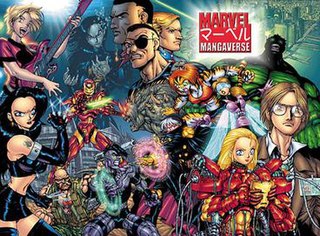
The Marvel Mangaverse is a series of comic books published by Marvel Comics from 2000 to 2002, with a sequel, New Mangaverse, released in 2006.

Margit Sandemo was a Norwegian-Swedish historical fantasy author. She had been the best-selling author in the Nordic countries since the 1980s, when her novel series of 47 books, The Legend of the Ice People, was published. She also wrote many other book series such as Häxmästaren and Legenden om Ljusets rike.

Karl Ove Knausgård is a Norwegian author. He became known worldwide for a series of six autobiographical novels titled My Struggle. The Wall Street Journal has described him as "one of the 21st century's greatest literary sensations".
Legenden om Ljusets rike is a set of fantasy novels by Norwegian-Swedish writer Margit Sandemo. It includes twenty titles. This set of novels can be read in Norwegian, Swedish, Icelandic and Polish. Margit Sandemo says that she wrote this series of novels because she wanted, like many other fiction writers, to portray her own view about an idealized world. Another reason to write Legenden om Ljusets rike was for the character called Marco who Sandemo created in the end of The Legend of the Ice People. She was so fond of him that she wanted to write more about Marco in the following series of novels. Those ideas took shape in her mind when she had written around half of Häxmästaren.
Häxmästaren in Swedish and Heksemesteren in Norwegian is a series of books by Norwegian-Swedish author Margit Sandemo. This series is Sandemo's second, following the extremely popular The Legend of the Ice People.
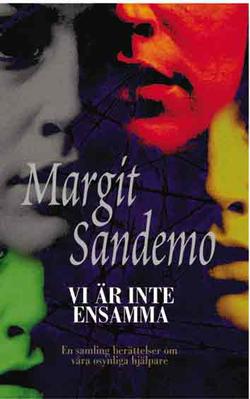
Vi är inte ensamma - en samling berättelser om våra osynliga hjälpare (Swedish) is a 1990 book about the occult, written by Swedish author Margit Sandemo. The name translates to Vi er ikke alene in Norwegian and We Are Not Alone - The Anthology Stories About Our Invisible Helpers in English.
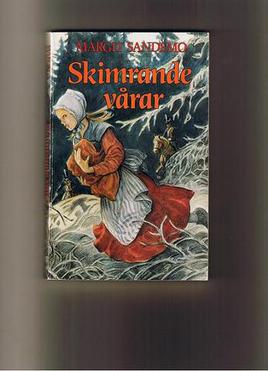
Skimrande vårar in Swedish and Legenden om den øde skogen in Norwegian is a short historical novel by author Margit Sandemo from 1993. This novel describes the life of six orphans which live alone in the middle of uninhabited forest. The main character of the novel is Juliane, the sixteen-year-old eldest sister. She and her older brother Jorulv must provide for their younger brothers and sisters after their mother died, and their father went to the town, a couple of days' walk away, and never came back. The winter is approaching, and Juliane and Jorulv wonder how they are going to survive. There is no one to help them, until Juliane meets a mysterious stranger she thinks might be the Forest God. This novel has translated also to Polish.
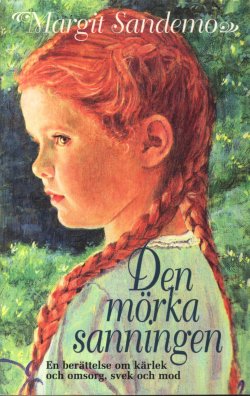
Den mörka sanningen - En berättelse om kärlek och omsorg, svek och mod is a love-story and crime novel by Norwegian-Swedish author Margit Sandemo from 2001. Forerunner of this novel is a serial in a magazine published short novel called Sanningen. The clue and characters of Sanningen are same as in the Den mörka sanningen, it's just the extended version from that story. Den mørke sannheten is the novel's Norwegian name. In Norway Den mörka sanningen has published as part of Spesial bøker -series, which is assembled of novels by many writers. Norwegian translation is by Unni Wenche Tandberg.
North America's Forgotten Past is a series of historical fiction novels published by Tor and written by husband and wife co-authors W. Michael Gear and Kathleen O'Neal Gear. The series, which began with 1990's People of the Wolf, explores various civilizations and cultures in prehistoric North America. It is somewhat comparable to Jean M. Auel's Earth's Children series, which is set in prehistoric Europe, but each of its books focuses on a different time period, location, and set of characters. The first four novels form a coherent, more or less linear narrative, from the initial migration of Siberian peoples into what is now Canada and Alaska through the florescence of the Mississippian semi-urban mound-building culture, considered the "high-water mark" of North American pre-Columbian civilization, around 1000 AD. The remaining novels cover a wide variety of times and settings, most standalone stories in no particular order, ranging from tropical Florida in the 6th millennium BC to the Chaco Empire of the Southwest in the 13th century AD. The novels take into account new developments in North American archaeology such as the discovery of Kennewick Man and the development of the coastal-route model as a possible alternative or supplement to overland migration across Beringia.
Historien om en fjälldal and Historien om en fjelldal in Norwegian is a trilogy, written in Swedish, by a Norwegian-Swedish fantasy author Margit Sandemo, who has become better known for her historical suspense novels.

Karsten Alnæs is a Norwegian author, historian, and journalist, who has dual degrees in history and literature from the University of Oslo. He worked as a journalist and taught at the Norwegian School of Journalism. His bibliography includes 15 novels, 3 children’s books, a collection of novellas, and a number of non–fiction works.
Kodoku, also called kodō, kojutsu, and fuko is a type of poisonous magic found in Japanese folklore. It is the Japanese derivative of the Chinese gu magic.

Sven Gustaf Fagerberg was a Swedish novelist, essayist, and civil engineer. He made his literary debut in 1957, with the novel Höknatt. Among his later novels are Svärdfäktarna from 1963 and De blindas rike from 1982. He was awarded the Dobloug Prize in 1980.
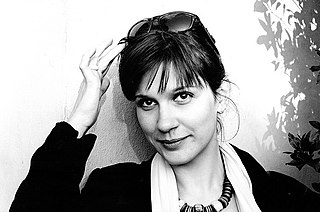
Birgithe Kosovic is a Danish journalist and author who has received several awards for her novel Det dobbelte land based on her family's background in the former Yugoslavia.

Fjällbackamorden is a Swedish series of ten 1.5-hour-long TV television films, based on characters from the "Fjällbackamorden" series of crime novels written by author Camilla Läckberg. Tre Vänner Produktion was the lead producer and the author was part of the project when presented at the Cannes Film Festival.
Sutapa Basu is an Indian author, educationist, poet, translator and a writing coach. She is a best-selling, award-winning author most known for her works Dangle, Padmavati and Genghis Khan,The Curse of Nader Shah and The Birth Of My Nation.
